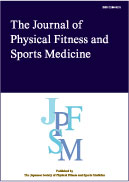Volume 7, Issue 3
Displaying 1-6 of 6 articles from this issue
- |<
- <
- 1
- >
- >|
Review Article
-
2018Volume 7Issue 3 Pages 153-159
Published: May 25, 2018
Released on J-STAGE: May 16, 2018
Download PDF (1413K)
Short Review Article
-
2018Volume 7Issue 3 Pages 161-170
Published: May 25, 2018
Released on J-STAGE: May 16, 2018
Download PDF (1467K) -
2018Volume 7Issue 3 Pages 171-175
Published: May 25, 2018
Released on J-STAGE: May 16, 2018
Download PDF (1161K)
Regular Article
-
2018Volume 7Issue 3 Pages 177-184
Published: May 25, 2018
Released on J-STAGE: May 16, 2018
Download PDF (1254K) -
2018Volume 7Issue 3 Pages 185-192
Published: May 25, 2018
Released on J-STAGE: May 16, 2018
Download PDF (1796K) -
2018Volume 7Issue 3 Pages 193-202
Published: May 25, 2018
Released on J-STAGE: May 16, 2018
Download PDF (2192K)
- |<
- <
- 1
- >
- >|
